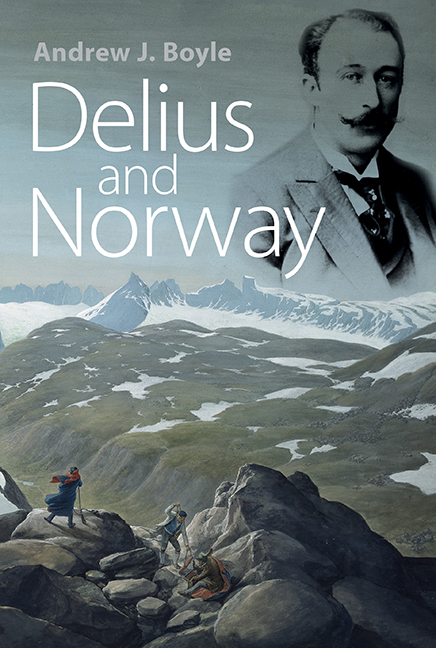Book contents
- Frontmatter
- Dedication
- Contents
- List of illustrations and tables
- Preface
- Abbreviations
- Selected glossary of landscape terms used in place names
- 1 Norway's awakening
- 2 1862–1888: Bradford, Florida and Leipzig
- 3 1888–1889: With Grieg on the heights
- 4 1890–1891: ‘C'est de la Norderie’
- 5 1892–1895: Norway lost
- 6 1896: Norway regained
- 7 1897: Front page news
- 8 1898–1902: Unshakeable self-belief
- 9 1903–1907: Breakthrough in Germany and England
- 10 1908–1912: Changes of direction
- 11 1912–1918: High hills, dark forests
- 12 1919–1934: Myth and reality in Lesjaskog
- Appendix I List of visits to Norway
- Appendix II Works with Norwegian and Danish texts and associations
- Selected bibliography and archival sources
- Index
Preface
Published online by Cambridge University Press: 30 August 2017
- Frontmatter
- Dedication
- Contents
- List of illustrations and tables
- Preface
- Abbreviations
- Selected glossary of landscape terms used in place names
- 1 Norway's awakening
- 2 1862–1888: Bradford, Florida and Leipzig
- 3 1888–1889: With Grieg on the heights
- 4 1890–1891: ‘C'est de la Norderie’
- 5 1892–1895: Norway lost
- 6 1896: Norway regained
- 7 1897: Front page news
- 8 1898–1902: Unshakeable self-belief
- 9 1903–1907: Breakthrough in Germany and England
- 10 1908–1912: Changes of direction
- 11 1912–1918: High hills, dark forests
- 12 1919–1934: Myth and reality in Lesjaskog
- Appendix I List of visits to Norway
- Appendix II Works with Norwegian and Danish texts and associations
- Selected bibliography and archival sources
- Index
Summary
Frederick Delius travelled to Norway on twenty occasions during his adult life, visiting the south-eastern coast and the central mountains for periods of one to three months. Although he was initially attracted to the country for the same reasons as many other Britons fleeing their industrialised landscape, his Norwegian journeys assumed ever greater significance in his career. He came to regard them as crucial to the health and survival of his artistic process. If prevented from visiting Norway for more than two summers he would become restless, sensing that his creative direction was becoming more difficult to determine. One such break in the chain of visits was caused by the First World War, when submarines and mines made sea crossings too hazardous; in a letter to her husband, Jelka Delius bemoaned the turn of events: ‘It is dreadful that we are cut off from Norway, I never felt so strongly that it is really a necessity to you.’ On another occasion she described Norway as ‘the land of Fred's constant longing’.
Delius identified subtropical Florida as the place where he, as a young man, had determined on a life as a composer. On returning from America he studied at Leipzig and then moved to Paris, where he enjoyed the Bohemian pleasures sought by many artists there in the 1890s. For the last thirty-five years of his life his home was in a French village. Places rich in colour, or exotic nature, or urban energy – such sensual locations always beckoned to Delius. Nevertheless, at regular intervals he needed to flee northwards in order to get his ‘old self back again’, as he put it. His physical energy was restored by weeks of bathing by the Kristiania Fjord; to reinvigorate his self-belief and to re-envisage his artistic direction he travelled on to the great Norwegian mountains. Again and again.
Norway became an essential active ingredient in his creative processes, easily recognisable in his output. Some thirty-three compositions, large and small, were inspired by his Norwegian experiences or were settings of texts by Norwegian poets.
- Type
- Chapter
- Information
- Delius and Norway , pp. x - xivPublisher: Boydell & BrewerPrint publication year: 2017

